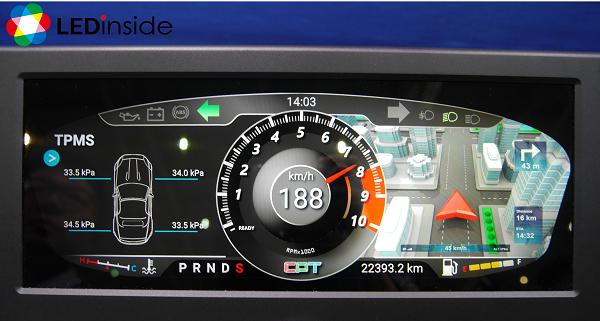The penetration of Mini LED is expected to increase in the coming years with applications including gaming display and other professional monitors. The technology is also becoming popular for automotive applications.
WitsView, a division of Trendforce, suggested a high possibility of Mini LED backlighting mass production in 2019 and noted that the cost of display production may increase by 20 to 100 percent depending on the number of Mini LED used. LEDinside noticed that Mini LED has been adopted as backlight for automotive displays such as HUDs, dashboards, in-vehicle infotainment systems and rearview mirror displays. Some LED producers also introduced conceptual applications of external automotive lighting with Mini LED.

According to industry sources, some automotive LED suppliers have delivered sample products of Mini LED backlight display module to OEM for validation. Meanwhile, Taiwanese LED packager Everlight also showcased a conceptual Mini LED taillight application which could show information for alarming other road users.
In comparison with the rival technology, OLED, Mini LED has the advantages of lower cost and higher reliability. Adopting OLED displays for interior display systems would be too pricey for mid-range cars and thus has limited its impacts on LEDs. Moreover, OLEDs are sensitive to UV lighting and its lifetime is thus limited for external applications. This is the Achilles heel of OLED for automotive application as reliability and stability are crucial for vehicles. For the reasons, currently OLED technology has difficulties to compete with LEDs in the automotive market.












